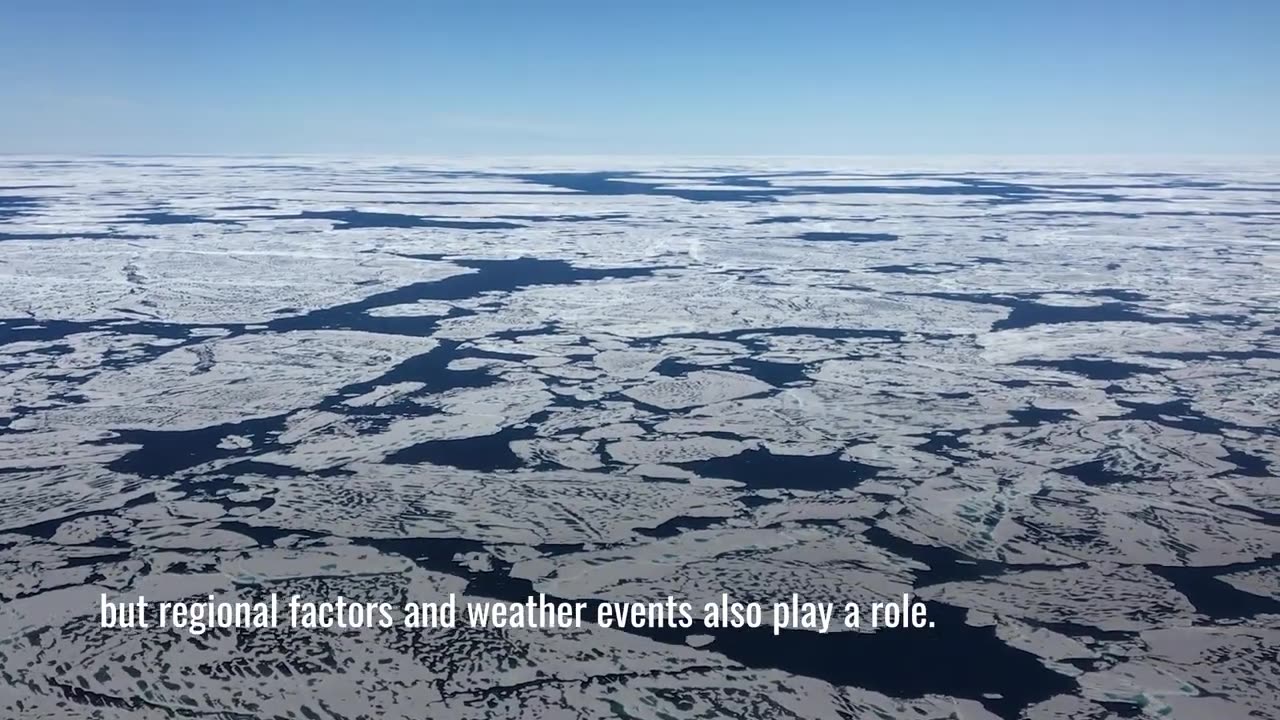Premium Only Content

Arctic Sea Ice Hits 2023 Maximum
On March 6, 2023, the Arctic sea ice pack appeared to reach its maximum extent for this winter, at 14.62 million square kilometers, or 5.64 million square miles, according to the National Snow and Ice Data Center.
Fieldwork and satellites like NASA’s ICESat-2 satellite are monitoring the changing ice pack, and helping to predict how the ice will change in the future.
Sea ice is frozen seawater that floats on the ocean surface. It forms in both the Arctic and the Antarctic in each hemisphere’s winter; it retreats in the summer, but does not completely disappear. This floating ice has a profound influence on the polar environment, influencing ocean circulation, weather, and regional climate.
Since 1979, satellites have provided a consistent continuous record of sea ice. Through 2015, the average monthly September extent of Arctic sea ice has declined by 13.4 percent per decade relative to the average from 1981 to 2010. Declines are occurring in every geographic area, in every month, and every season. Natural variability and rising temperatures linked to global warming appear to have played a role in this decline. The Arctic may be ice-free in summer before the end of this century.On March 6, 2023, the Arctic sea ice pack appeared to reach its maximum extent for this winter, at 14.62 million square kilometers, or 5.64 million square miles, according to the National Snow and Ice Data Center.
Fieldwork and satellites like NASA’s ICESat-2 satellite are monitoring the changing ice pack, and helping to predict how the ice will change in the future.
Sea ice is frozen seawater that floats on the ocean surface. It forms in both the Arctic and the Antarctic in each hemisphere’s winter; it retreats in the summer, but does not completely disappear. This floating ice has a profound influence on the polar environment, influencing ocean circulation, weather, and regional climate.
Since 1979, satellites have provided a consistent continuous record of sea ice. Through 2015, the average monthly September extent of Arctic sea ice has declined by 13.4 percent per decade relative to the average from 1981 to 2010. Declines are occurring in every geographic area, in every month, and every season. Natural variability and rising temperatures linked to global warming appear to have played a role in this decline. The Arctic may be ice-free in summer before the end of this century.
-
 2:21:20
2:21:20
Robert Gouveia
2 hours agoTrump Goes to SCOTUS! Judge CAVES on DOGE? Fani Willis Not Happy!
29.2K7 -
 20:41
20:41
Stephen Gardner
2 hours ago🔥You Won't BELIEVE What JUST Happened To Don Trump Jr.!!
22K74 -
 LIVE
LIVE
The StoneZONE with Roger Stone
59 minutes agoEuropean Leaders Resist Trump Peace Overtures To Their Own Demise | The StoneZONE w/ Roger Stone
550 watching -
 9:29
9:29
AlaskanBallistics
2 hours agoWyoming Suppressors and Rifles at Shot Show 2025
2.41K2 -
 1:06:40
1:06:40
Donald Trump Jr.
6 hours agoThe Left is Taking one L After Another, Live with Michael Knowles | Triggered Ep. 217
92.4K76 -
 47:17
47:17
Kimberly Guilfoyle
6 hours agoWoke Gets DOGE’d, Live with AJ Rice & Jarrett Stepman | Ep. 197
70.9K31 -
 20:11
20:11
Candace Show Podcast
5 hours agoBecoming Brigitte: Candace Owens x Xavier Poussard | Ep 6
121K267 -

Dr Disrespect
9 hours ago🔴LIVE - DR DISRESPECT - ELDEN RING DLC - REVENGE
148K18 -
 54:22
54:22
LFA TV
1 day agoThe End of the Trans-Atlantic Alliance | TRUMPET DAILY 2.17.25 7PM
20.3K1 -

BIG NEM
8 hours agoUGLY COCO: The Rapper Who’s Tried EVERY PSYCHEDELIC 🌌
2.05K